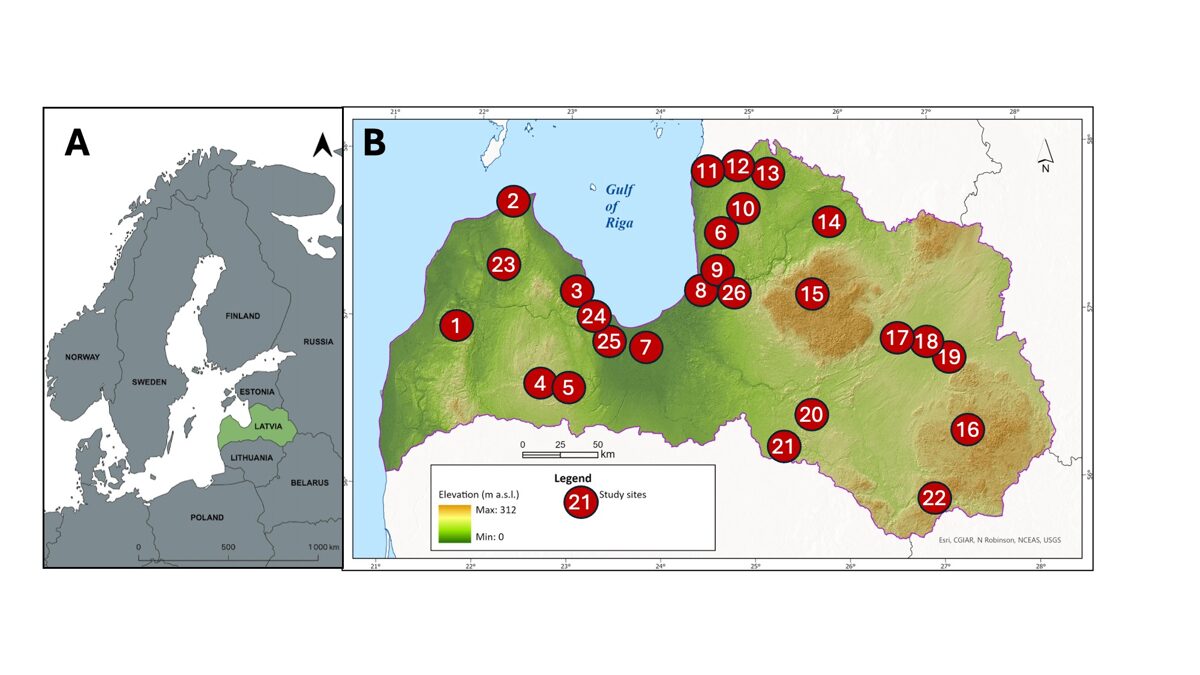New Research on Peatland History in Latvia
The Lake and Peatland Research Centre is proud to share the results of a new scientific article published in the journal Catena, titled "Climate change impact on peatland dynamics during the Holocene in Latvia". This study brings together long-term data from 26 peatlands across Latvia (Fig.1) to understand how these unique ecosystems have formed and evolved over the past 11,000 years.

Figure 1: Peatland study sites across Latvia. Each red circle marks a location where data were collected.
What did we find?
Peatlands started forming in Latvia over 11,000 years ago, beginning as fens - mires rich in nutrients fed by groundwater. Later, many of these fens transformed into bogs, which rely only on rainfall and are more acidic and nutrient-poor. During the Middle Holocene (around 8,200–4,200 years ago), peatland growth slowed down due to a warmer and drier climate - a period similar to what we may face again due to modern climate change. On the other hand, cooler and wetter periods - especially the Early and Late Holocene - favoured peat formation. These conditions allowed peatlands to store more carbon, highlighting their role as natural climate regulators. Our results show that Latvian raised bogs have stored up to 194 grams of carbon per square metre per year in recent millennia, confirming their importance as carbon sinks.
Why does this matter today?
With the climate getting warmer and drier, especially in summer, there's a real risk that peatlands will stop accumulating peat and carbon - possibly even turning from carbon sinks into carbon sources. This makes peatland protection and restoration more important than ever.
Read the full article here: DOI: 10.1016/j.catena.2025.108965